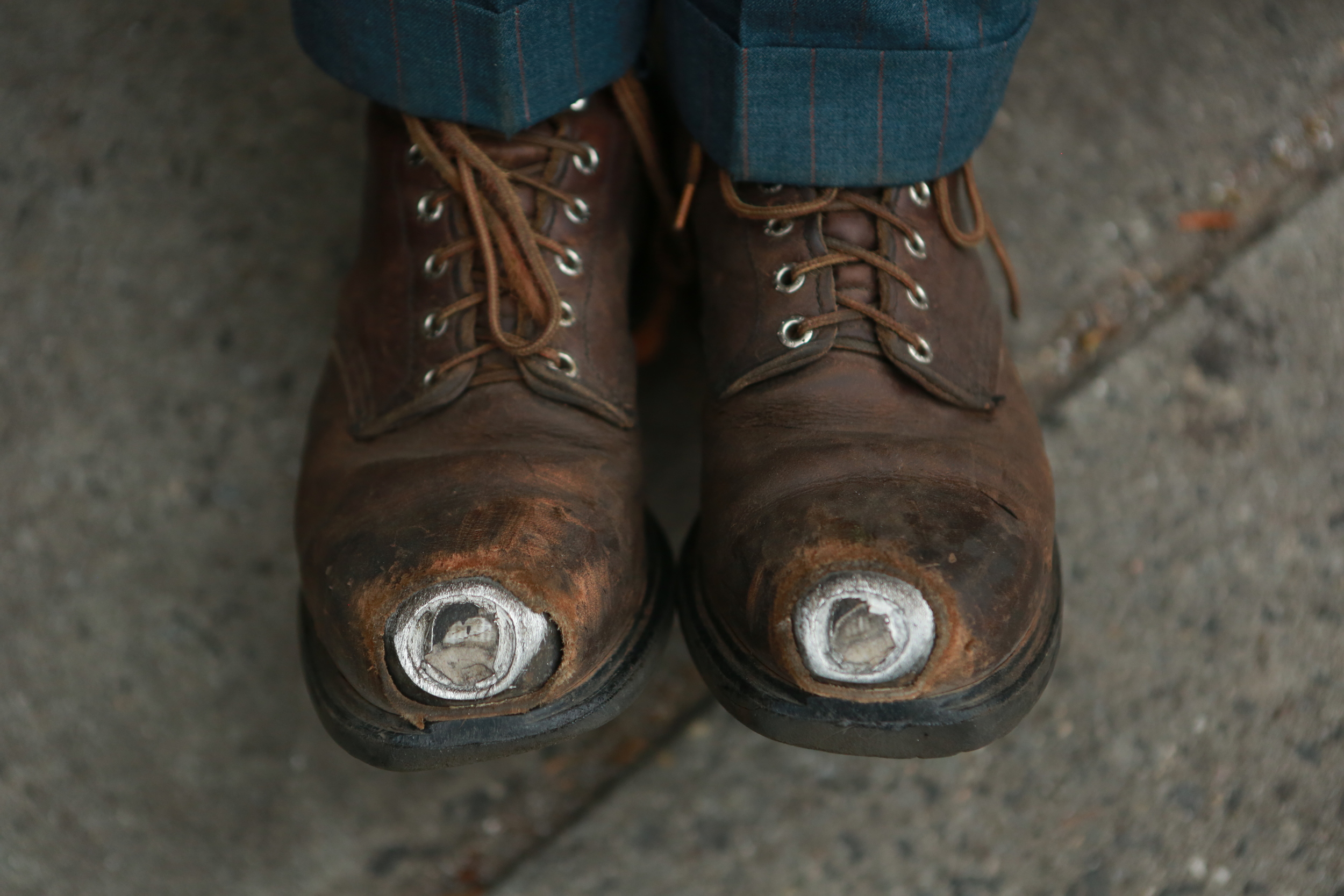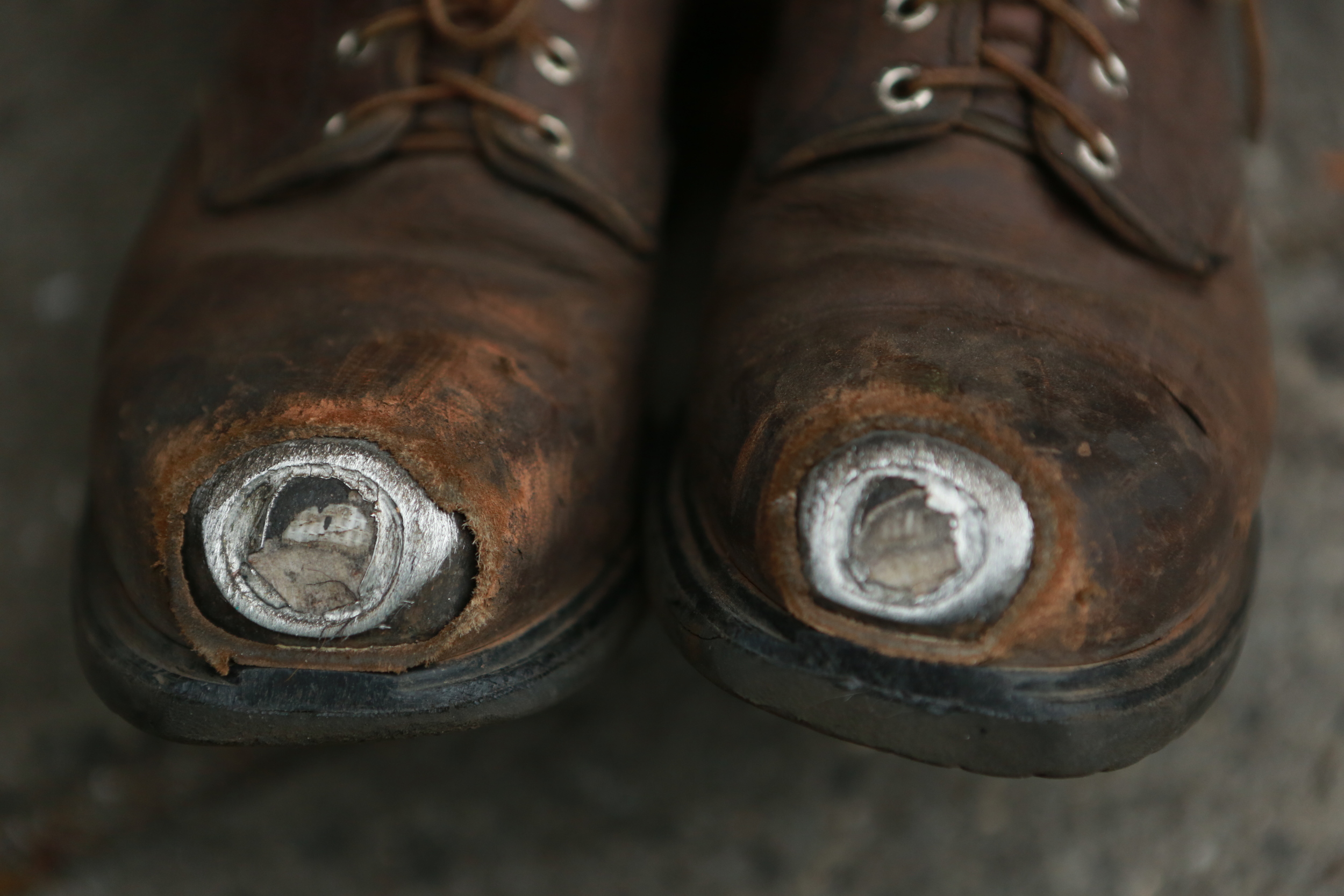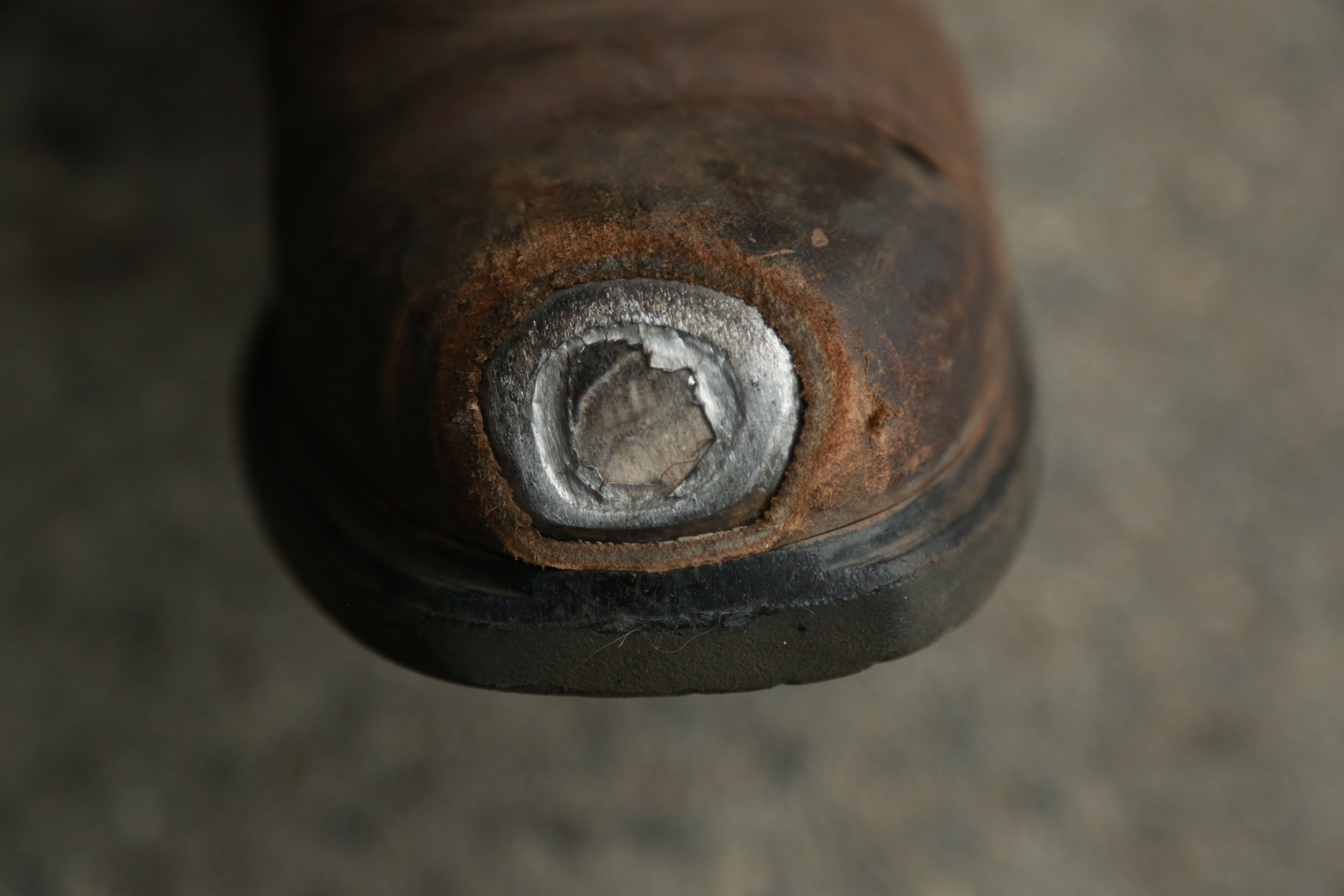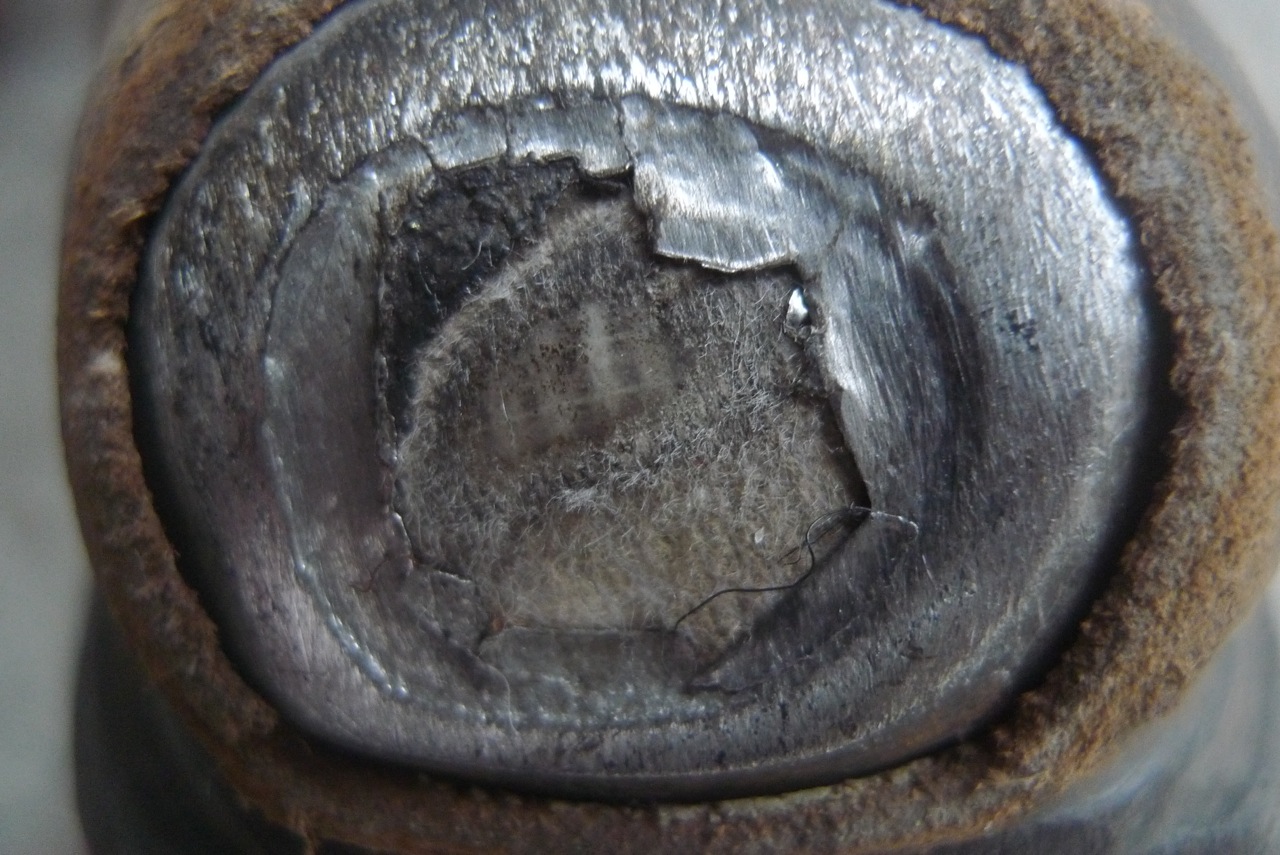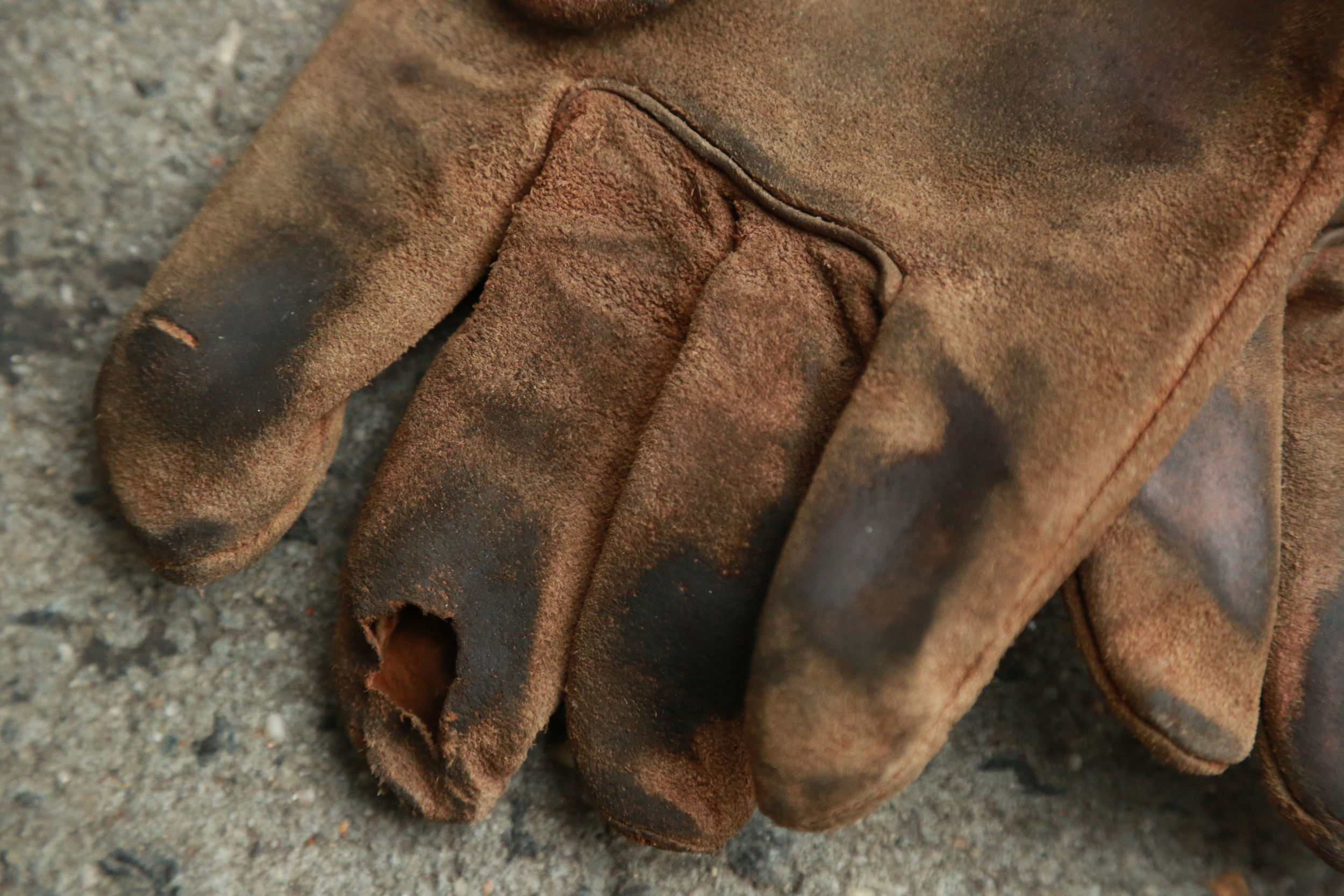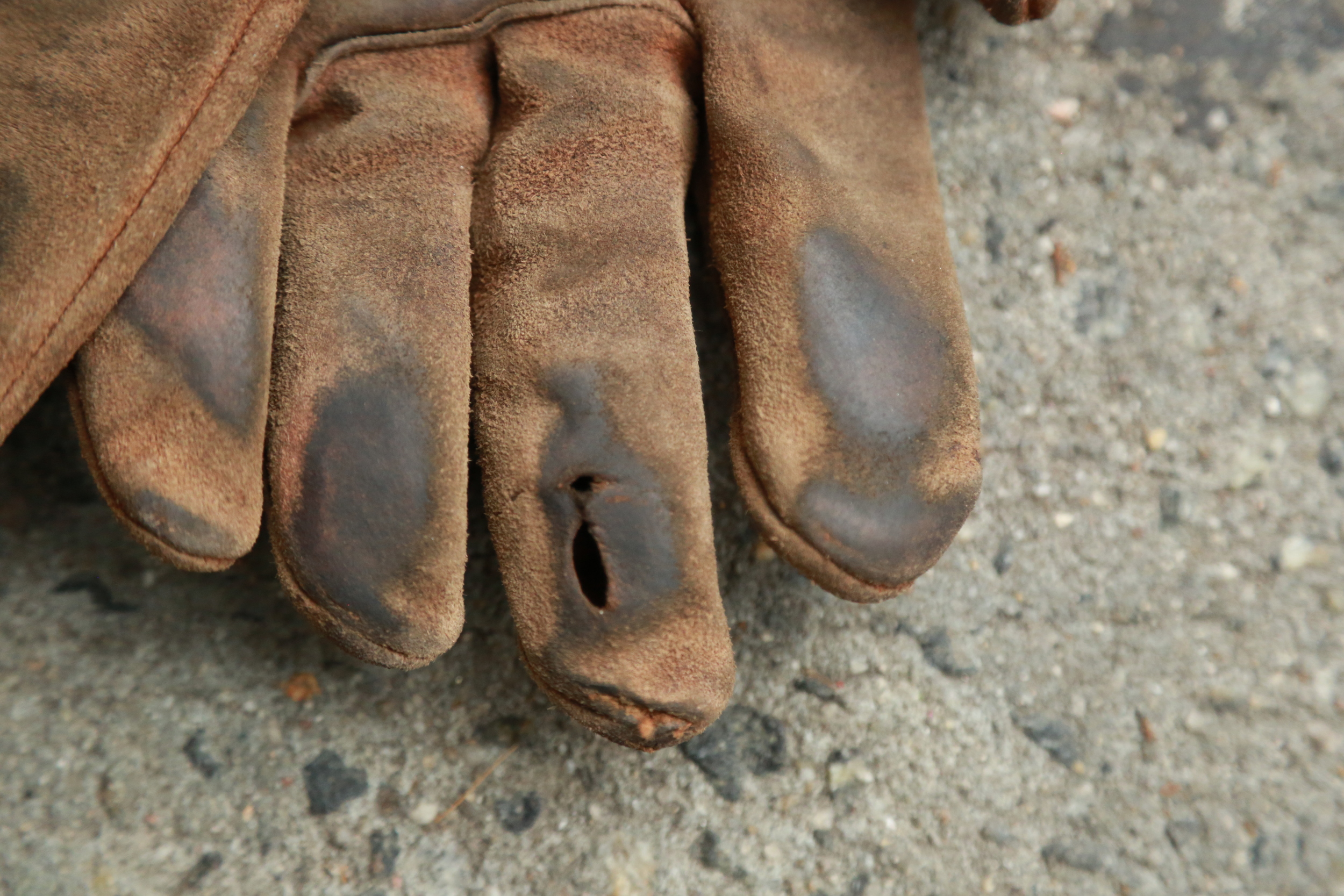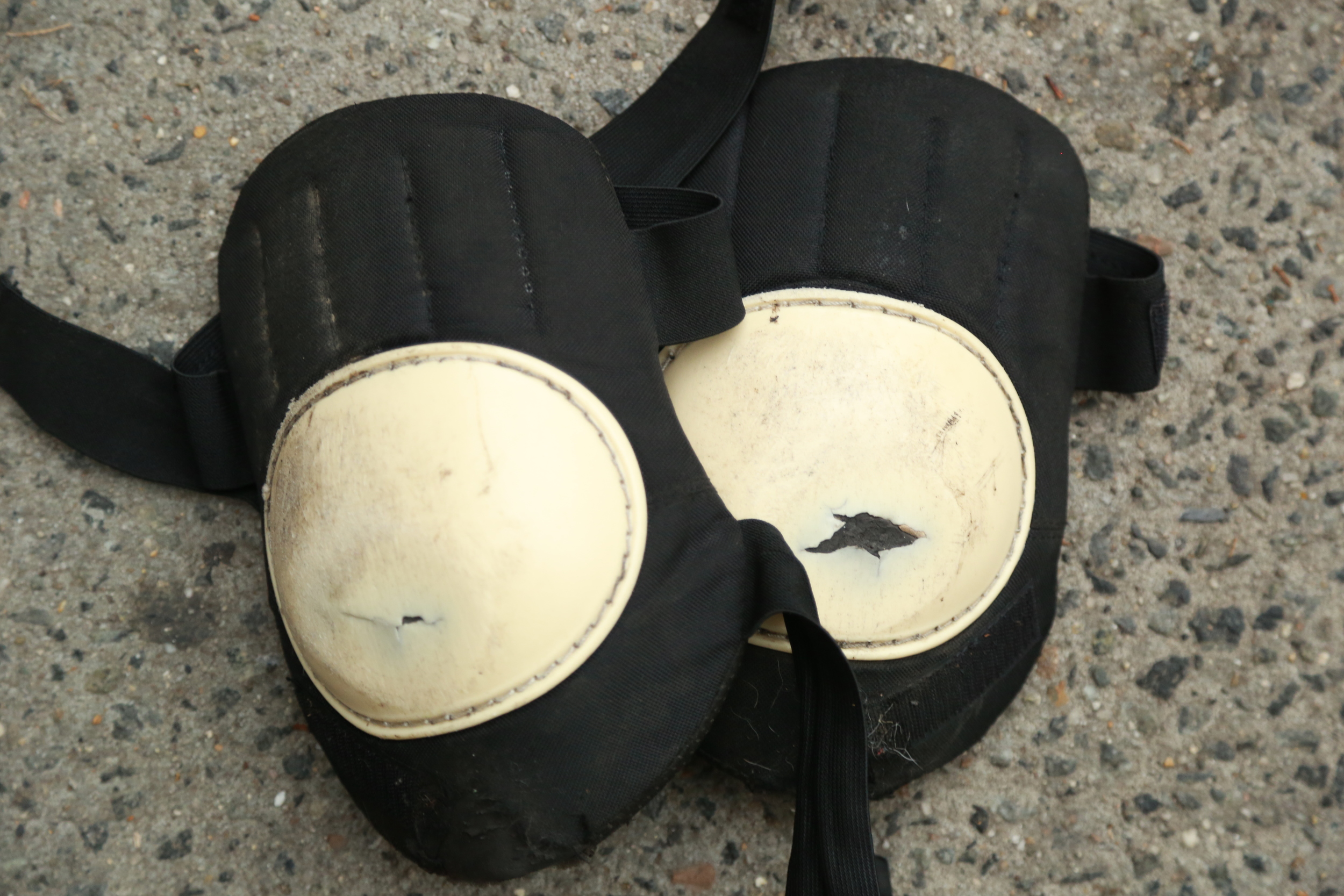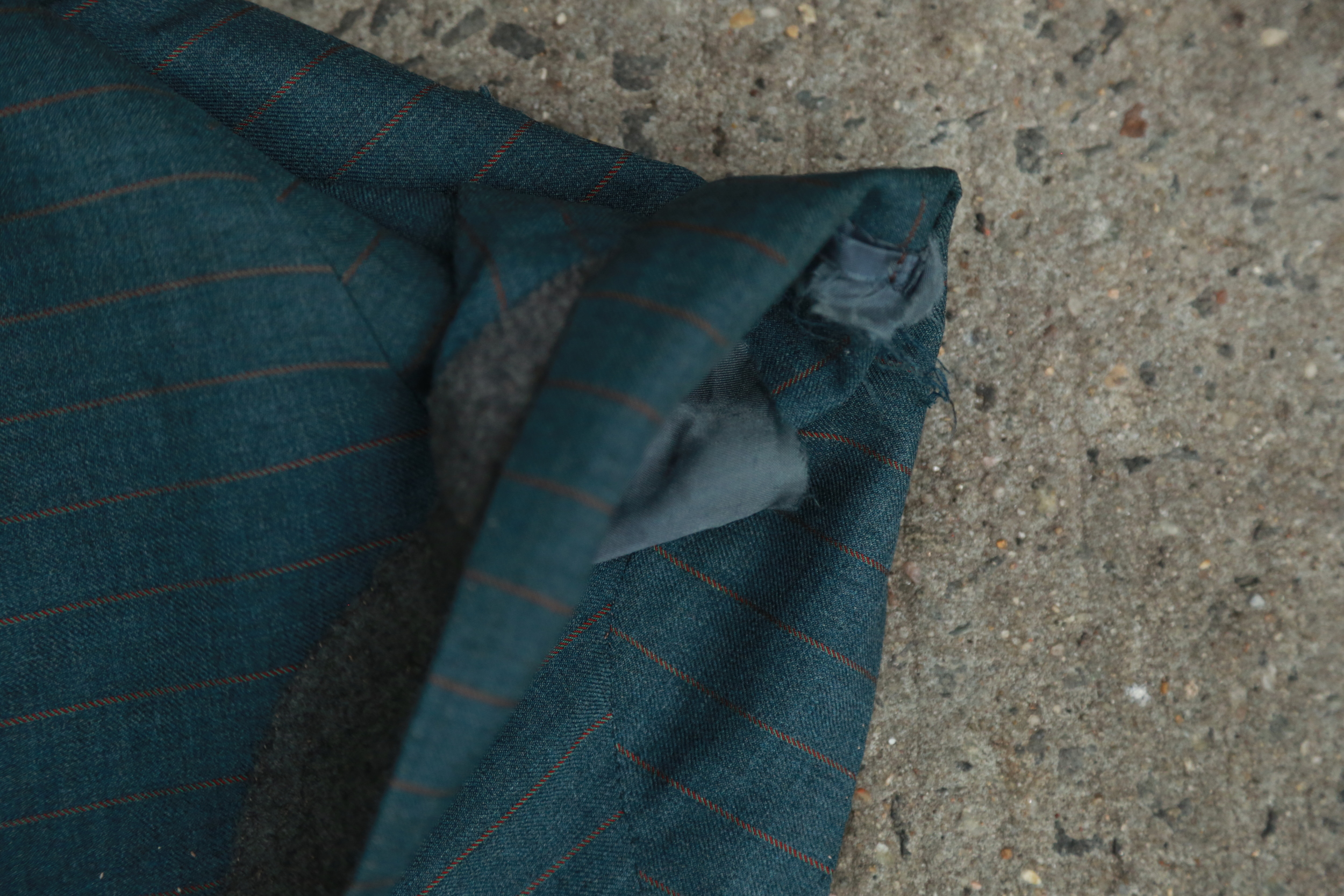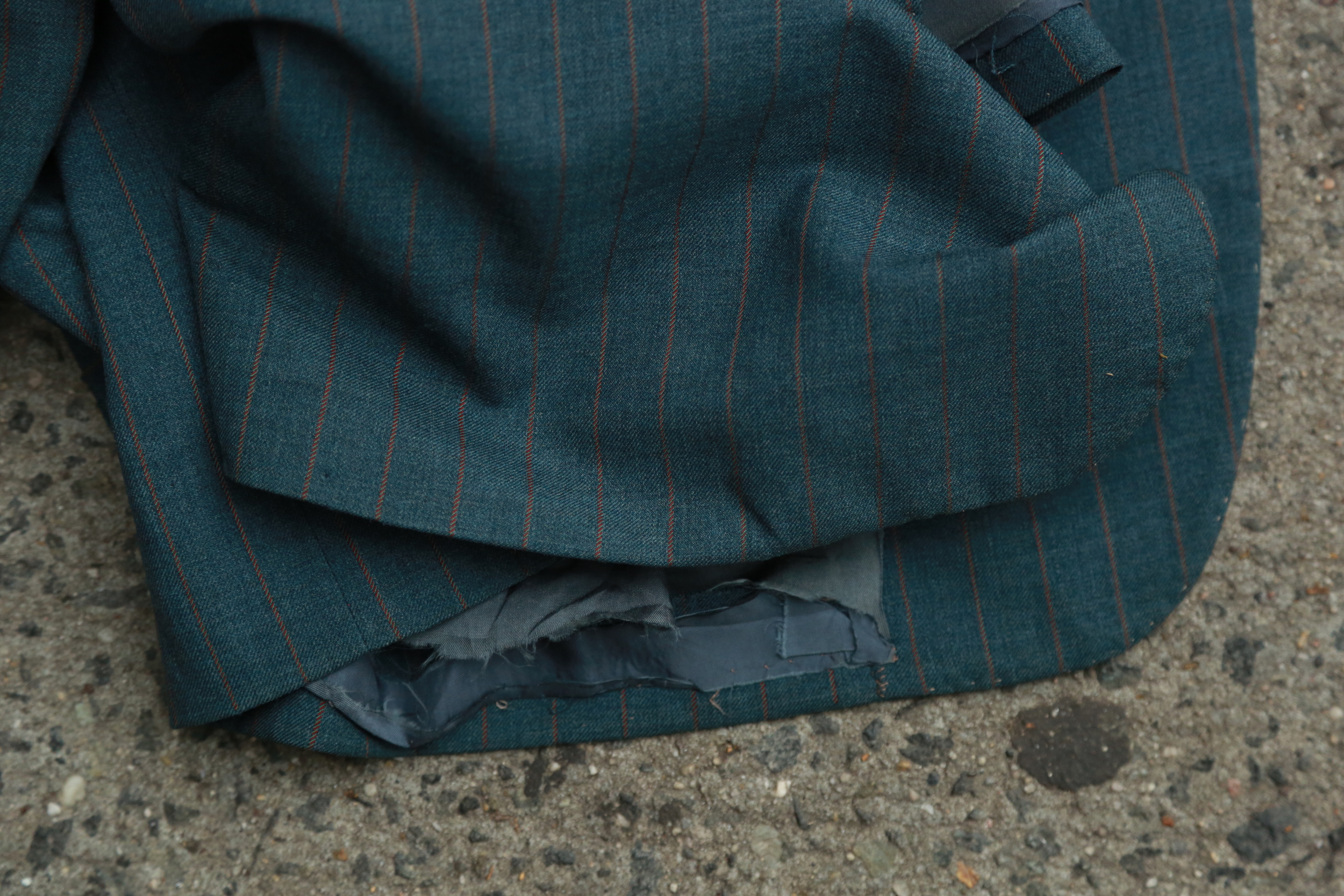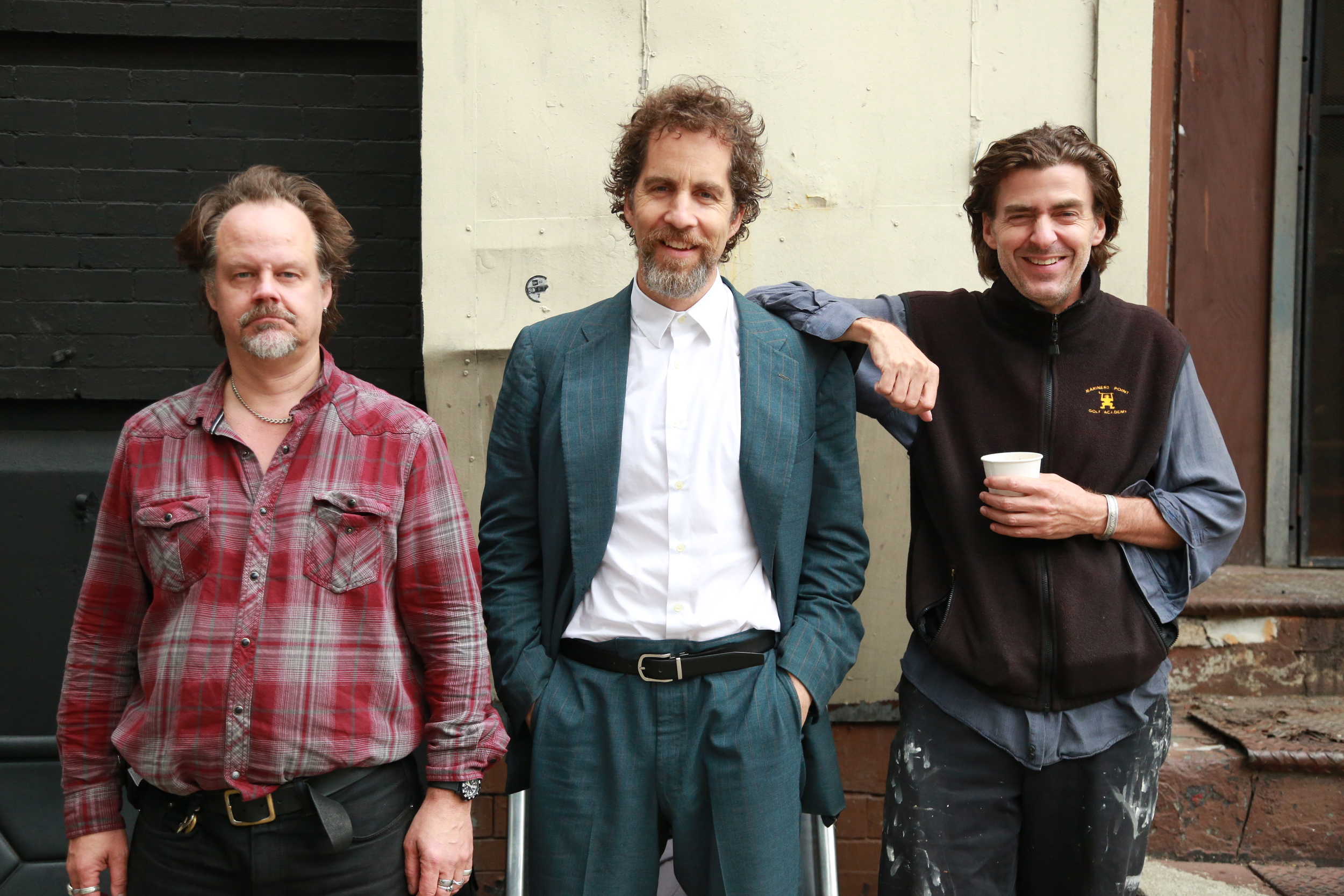From Robert Leaver:
It’s strange not crawling. Being done. What now? Not having a crawl on the horizon is a relief…almost. But it also feels sad. I suppose I’m a bit unmoored. Post Traumatic Crawl Disorder? Maybe. Letting it go is harder than I expected. I don’t want to lose touch with the people I’ve shared the crawl with. And I think about all the strangers who engaged with me as I crawled. Gone forever? I even wonder about the people who did not register my presence, who ignored the crawling man. Or maybe they didn’t. There is no way to know. They are all part of the crawl. It takes a split second to see something, a split second to look away. I imagine the happenings that I’ve missed in my life, things that passed right by me, close enough to touch. I guess I’m still quietly reeling.
I will never forget Crawling Home, that’s for sure. So many highlights. I’m tempted to crawl down memory lane right now, but I will restrain myself. I’ve said my piece, and then some. This entry makes 20-- a solid even number. Thank you to all who urged me on and supported this project.
Here are some up close pictures of what crawling all the way home does to kneepads, gloves and boots. And here are some words from my precious wingmen. Please feel free to write me and tell me what, if anything, the crawl meant to you, or how it feels having it be over. Fear not the lowness. Be well, friends, and know that I will always remain your faithful crawler. As ever-RL
From Larry Fessenden:
Notes from a wing man
For a couple of years Robbie Leaver and I were writing scripts together, our collaboration was fruitful and robust. I dare say we wrote some fantastic scripts I’m still fighting to get made. When we allowed ourselves digressions from the work Robbie told me he wanted to crawl somewhere in protest against something, he wasn’t sure what. He might have a huge globe on his back and crawl from New York to Washington to protest environmental abuses.
None of that happened, but in the Fall of 2013 when he told me he might crawl up Manhattan in his father’s suit, I didn’t blink. It made sense and it was manageable. We talked about what it would all mean and agreed that it needed to be open to interpretation. We did set some parameters: only Broadway and maybe he was Crawling Home to his apartment in Washington Heights.
I missed the maiden voyage on Halloween 2013, so I was able to learn of the unfolding project like others on Robbie’s mailing list. At first he was just e-mailing the crawl diaries to friends, but I encouraged him to start a website—not facebook, not too public, but something you could find if you looked, a destination that could be shared, where the whole journey would be chronicled.
Robbie had two reliable wing men on the project and one of them was the writer and raconteur Teddy Jefferson who accompanied the crawler on the maiden voyage and took photos that remain iconic 19 crawls later. The other wing man was me. I relished the chance to revisit my early days as a documenter of live events; I videoed performances in the 80’s in downtown New York, and also shot weddings at that time, events that unfolded without second takes. I love that kind of high-stakes shooting.
For the early crawls I edited in-camera, setting up an additional challenge for myself. As we got deeper in, I tried different rigs, such as a pole-cam designed to float indifferently above the crowds (#5, #19) and alternative cameras to my regular Canon 5D, including s8mm (#6, #16) and a couple point-and-shoots. The first crawls, which took 45 minutes to an hour for a trek of ten blocks, would string out to about 20 minutes of footage. The video was never supposed to be the point of the piece, nor the sole record of it.
The Crawl was first and foremost a live event, and secondly, a written recollection of Robbie’s experience. Thirdly, it was documented in iconic stills that accumulated as the crawls continued. Only lastly was there the video, which depicted the time-based reality of the crawl: arduous and repetitious. The videos have a strange inexorable movement to them, in which the viewer can watch events unfold as they did on the day. There is much richness to be discovered by the careful observer: recurring characters, strange exchanges, narrative developments and so much visual irony in the vivid tapestry of the city.
Not far into the piece, some of the feedback on the web started pointing out that the presence of the camera was changing the crawl, dispelling the mystery. This was demonstrably true, as some witnesses would stare astounded at the crawler, then search for a camera to justify and contextualize the odd behavior. Once seen, the novelty of the sight was diminished: “Oh, they’re just making a movie.” From my point of view then, the crawl project became an examination of our relationship to media. If something is filmed, it is owned, controlled, demystified. If something is being videoed, it is explainable. So the presence of the camera negated the oddness of the image that we were creating. Maybe “indigenous people” are right: the camera steals the soul.
Of course at the same time, one of the most common responses to the strange Broadway Crawler by the people on the street was to video him. There must be countless hours of cell phone footage and still shots of the Crawler out there. This all lead to a discussion of what was the purest form of the crawl. Naturally we concluded that to crawl alone would be the real deal, but like a tree falling in the woods, undocumented, would then the crawl ever even have happened? It still seemed imperative that we capture images of this strange odyssey for posterity. And so we found ourselves in a fairly predictable 21st century dilemma. Defensively, I proposed rather early on that Robbie should crawl alone, at least once. There would be the written recollections after all, surely that would be enough.
It was ironic that one of the reasons Robbie didn’t crawl alone for some time is his wife and kid were afraid for him and hoped he would always have a wingman. And the other reason not clear to the web observer was the crawl was a communal experience between Robbie, the city and his wingmen. Performance art has many motivators and one in this case was a yearning to connect: with the city, with the web visitors and with the wingmen, fellow travelers in this strange ritual.
Eventually work took me out of town and eventually Robbie did crawl alone.
When we reunited in the Spring, with only a few crawls left, we started to think about shaping the raw footage more. One crawl we edited to a three-minute music video, a welcome change from the verité treatment of previous crawls. The next video employed the intimate sounds of the crawler recorded on a mic placed on Robbie’s lapel, an enhancement I’d been too lazy to employ earlier.
The final embellishment to the video portion of the project was a second cameraman, my son Jack who joined us on the penultimate crawl and got hooked. This brought in a new perspective to the shooting and by definition required a more refined edit. It so happened that this was perhaps the most boisterous, exuberant crawl of the entire project, the whole neighborhood along upper Broadway was bathed in the golden light of a summer’s eve, buzzing with activity. Without fanfare a tiny magical matador in a white suite appeared out of the crowd. That strange little man got on the crawler’s back and rode him like Don Quixote in a surrealist street play.
But neither video camera caught it—maybe we were changing batteries. There was much hemming and hawing about missing perhaps the most spectacular moment of the near-200 block performance piece, but I remained defiant: the video record was never the point of the project, only an adjunct. It captured some aspects but not all of what happened on those streets over the course of those eight months. Many web trawlers scanned the video for some confirmation of the fantastic claims that the little man rode upon our Crawler. But there was no evidence save for one lone still shot.
Perhaps because the presence of the video camera had been scrutinized by some web commentators early on, I relished that this essential image went undocumented in the video. It will exist more in the realm of mythos, more in keeping with the intangible aspect of he crawl. Let us just say that I did not want my part of the crawl to be the demystifying of it, and so my failure as a documentarian helped preserve something integral to the project. Though I love cinema, I recoil from the ubiquity of video replacing all the other means by which we memorialize and share our experiences.
The final crawl, which brings the crawler home, was a two-camera shoot edited with music and sound; a fitting end to the journey, where we finally allowed ourselves to infuse the documentation with some of the emotion we had accumulated on the way. And so, from the first crawl to the last, there was an evolution to the documentation, from cinema verité to some sort of refinement, as the narrative poignancy of the journey’s end asserted itself.
I always said to Robbie, as he sought to define what he was doing and why, the real act was in creating an image, the image of a figure crawling on hands and knees up the sidewalks of this city in this time in our political and cultural history, during these seasons of this particular year. And that image carries an emotional weight for those who encountered it in real life and for those who followed it on-line.
I’ll miss the crawl. It was a chance to support art for art’s sake. It’s been a while.
From Teddy Jefferson
The blog kept by the first crawler no longer exists.
We know what the first crawler looks like from the pseudo crawler.
The pseudo crawler, deeply affected by the sight of this man in a bruise‑blue suit plodding on all fours through the traffic and mayhem of the giant city, created a false crawl blog using photographs from the authentic blog but inserting his own observations ruminations and diatribes.
There is no way of knowing whether the pseudo crawler ever crawled himself, even once.
Why the first crawler crawled is not clear but the sight of him unleased in others pent up frustration and rage at where humanity is headed.
The first crawler apparently conceived of the crawl as a form of protest but did not elaborate precisely what he was protesting.
He is believed to have said, "The mess of the way things are just makes me want to crawl."
The fact that there was no explanation, no theory, no name or agenda, nothing but the plain spectacle of this creature moving along the pavement, worked powerfully on the people who saw him.
He aroused what the giant sea turtle arouses making its way from the surf up the beach to lay its eggs: part wonder and part awe.
Next to the images from the original blog, the pseudocrawler presented a philosophy and a call to arms that people responded to immediately, in great numbers, and with startling intensity.
His message was partly apocalyptic and partly personal.
The essence was that the human being has betrayed nature and the solidary that exists within nature and the planet
Mankind figures as the rogue species, his mind diseased by the abstractions produced by his unprecedentedly large brain.
Ultimately the size of the cranium is the root of the problem.
The blog contains other observations:
‑Crawling is the fast of the soul.
‑Once man stood up the problems started; he was simply too far from the earth.
‑Human nature consists solely of the man's separation from nature.
‑Among animals man distinguishes himself only in his sadism and waste and greed.
‑The human himself is the counterfeit, the bad copy.
‑Crawling is an act of submission to nature undertaken to save it.
The pseudo blog called on people to attack the bad and create the good. There was considerable leeway in the above.
The pseudo blog also featured odd diatribes against particular products of modern life: mayonnaise, teeth whiteners, and velcro.
Because he never learned about the pseudoblog, the crawler felt that he was responsible for many of the developments in the city since his departure a few months earlier: the proliferation of copycat crawlers, a mood of euphoric rebellion, the barricading of streets to recapture public space, and a wave of related vandalism and violence.
It was the "forced crawls" that troubled him most. Small bands of marauders would target people as enemies and force them onto their hands and knees with broom handles and sections of electrical cable and make them crawl.
One sight particularly disturbed him: a copycat crawler being ridden by the same highly‑animated elderly man dressed all in white who had ridden him on one of the final stretches of the original crawl. The old man behaved exactly as he had before, jabbering away like Sancho Panza and slapping his ride to make him go faster. The original crawler tried to make the old man see this copycat crawler was a fake, and was crawling in the wrong spirit, but the old man paid him no attention. Worse, he didn't even recognize him, which stung him deeply.
The crawler returned to the streets in the familiar suit and gloves and kneepads hoping to restore what he felt was the true vision and ethics of the crawl.
But none of the new crawlers had any interest in what he tried to tell them. Not only didn't they recognize him; they derided him for his gloves and kneepads and his claim that he "started all this."
None of them used kneepads or gloves; the release of their blood onto the pavement seemed to thrill them.
The original crawler was no one to them.
They howled at him, "Crawling? You started it?"
The idea that there was some intention or code of behavior they were betraying revolted and infuriated them.
After a while the original crawler fled but the bloody copycat crawlers shouted after him. Some got up to pursue him. He ran. The shouting attracted some of the marauding forced‑crawl posse which quickly circled him and pushed him to the ground and began beating him to make him crawl. He complied.
The group around him grew larger. He saw only their feet. Half were crawlers' feet, the knuckles bleeding where they had dragged across the pavement. The knees were worn through their pants and skirts and dresses and bloody as well. They were chanting and cursing.
This is when I came across him. I was surprised by the effect the sight had. I remembered clearly the first time I'd seen him: the lone crawler, silent, unannounced, making his way up the avenues as people looked on in fascination. Now, perhaps because of the shouting and frenzy, I felt what the crowd felt, that the crawler was being punished for doing us wrong, that he was a predator and an enemy and was getting his medicine. I felt this even before I recognized him. I felt I should grab a stick and beat him as well. I felt I wanted to kick him in the ribs as he passed. And so I did. I kicked him in the ribs as he crawled along, maybe in the very path he had crawled the year before when I saw him the first time. He turned his face towards me when he felt the kick. Only then did I recognize him, and was amazed by how different he looked. Before, his face had radiated a kind of serenity and dignity and purposefulness. It had seemed that he alone was right and we, looming above him on two feet, were all wrong, blind to the essence of things. I would have gotten down and crawled too if I'd had the courage. But now in his face there was only exhaustion and pain and fear, and because of this, not despite it, I was sure he deserved it. He winced when the foot went in, but kept on going, and I realized I now understood the secret of the crowd: we were kicking him because he looked like he deserved it, and the more kicks he took the clearer it was he was getting what was coming to him.
And then he stopped moving for a moment. Supported with his left hand, he brought his right hand to his mouth and closed his teeth on the middle finger of the glove and pulled it off so he could wipe the stripes of black sweat from his forehead. The gesture was so unusual for a human, like an animal scratching its cheek with a hind leg, yet so simple, that all of us just watched in silence. Then he tipped back on his haunches like a prairie dog sniffing the wind and rocked up onto his feet and shook his head and his hair, drenched in sweat, and then just looked around. He looked at the crowd calmly and with plain amazement as if to say, "What were you kicking me for?" and seeing him suddenly up on two feet, we couldn't remember why. The despised creature was gone. Here was just another man. He didn't even speak. He just looked at us. The crowd around started to disperse. I tried but couldn't remember why to despise him. I didn't want the moment to slip away. I tried to reassemble the image that had excited me to such anger and certainly just minutes before but I couldn't.
One of our crowd had been whacking him with an aluminum cane, and he turned to this person, a boy of around 18 with pale first whiskers at his chin and cheeks spotted with acne, and he said to him, "Can I have that?" The boy passed him the cane and the crawler took it and began to walk away, limping heavily. The beating must have hurt him.
I now saw that the steel toes of his boots had been worn through the leather and glinted as he moved away like the eyes staring up at him every step, winking. As he rounded the corner the shouting of another group of marauders exploded through the street.
